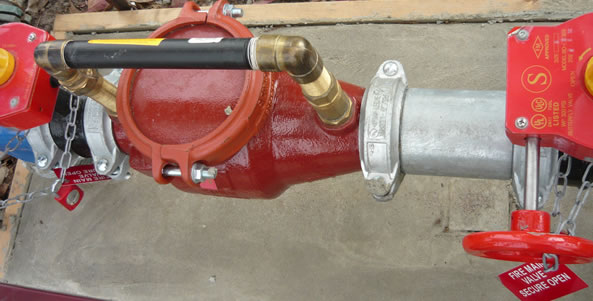- Ensuring the service is maintained at a level of performance specified by the relevant building surveyor
- Periodical inspections and checks in accordance with an Australian Standard or other specified method; and
- Maintaining a record of the maintenance inspections and checks in the form of an annual ‘essential safety measures report’.
Regular maintenance of various services is required to check:
- General wear and tear — i.e. electro-magnetic hold-open devices on fire doors, replacement of emergency lighting batteries and tubes
- Reliability of a system operating — i.e. sprinkler system, early warning and intercommunication system
- Faults after commissioning of a system — i.e. emergency power supply
- General housekeeping — i.e. ensure paths of travel to exits are not obstructed, portable fire extinguishers remain in place.
Councils have a responsibility under building legislation for the enforcement of building safety within their municipality.
Building owners have an obligation to ensure that an essential safety measure, piece of safety equipment, fitting or other safety measure is maintained so that it operates satisfactorily.

WHAT IS AN ESSENTIAL SAFETY MEASURE?
An essential safety measure is defined under the Building Regulations 2006. This may include safety systems such as:
- Air conditioning systems
- Exit doors
- Early warning systems
- Emergency lifts and lighting
- Emergency lighting
- Emergency power supply
- Emergency warning systems
- Exit signs
- Fire control centres
- Fire curtains and doors
- Fire extinguishers
- Fire detectors and alarm system
- Fire hydrants
- Fire isolated stairs
- Fire rated materials
- Fire windows
- Mechanical ventilation
- Passage ramps
- Path of travel to exits
- Smoke alarms
- Smoke control systems
- Sprinkler systems
Essential safety measures include all traditional building fire services such as sprinklers and mechanical services etc., but also include passive fire safety equipment such as fire doors, fire-rated structures and other building infrastructure items such as paths of travel to exits.
What type of buildings are affected?
All buildings other than a house or outbuilding are affected. These include the following Classes as defined in the Building Code of Australia:
Class 2: Buildings containing sole-occupancy unit (e.g. apartments, blocks of flats)
Class 3: Backpacker accommodation, residential parts of hotels or motels, residential parts of schools, accommodation for the aged, disabled or children
What does the law require?
The Regulations require you as the building owner to maintain all safety fittings, equipment and safety features as well as those items listed as essential safety measures.
There may be different obligations under the Regulations depending on when the building was built or when building work occurred on that building. See publications listed below.
What documentation is required by the Regulations?
The Regulations require the owner to keep all annual essential safety measures reports, records of maintenance check, service and repair work records on the site for inspection by the Municipal Building Surveyor or Chief Officer.
The Regulations also describes what the annual essential safety measures report should contain and that the owner or agent of the owner is to sign the Annual Report.
More detailed information and template forms
Forms are available in the Appendices of the Manual
